Cakes tend to be very delicate and fragile. They easily break when they are put through some type of pressure or turbulence. You might be a victim of a cake disaster if you have ever transported a cake from one place to the other.
There are a number of things you have to do to make sure the cake stays intact during the trip. And I am going to help you list down the essentials, so you never have to deal with a cake fail because of long-distance ever again.
So, let’s learn how to transport a cake long distance.
What Are the Major Issue with Transporting Cake
Before we tackle how we can prevent any mishaps from happing to our cakes during transportation, we are first going to talk about what kind of problems we usually see when we are delivering the cake somewhere far away.
Turbulence
The first issue we have to deal with is the turbulence. Now, the roads aren’t always great, and we often have to deal with heavy traffic. In all of this, there is a lot of movement and jerking, which often shakes up the cake. This leads to either the frosting getting mushed up or the cake itself being messed up.
Soft Creams Spilling
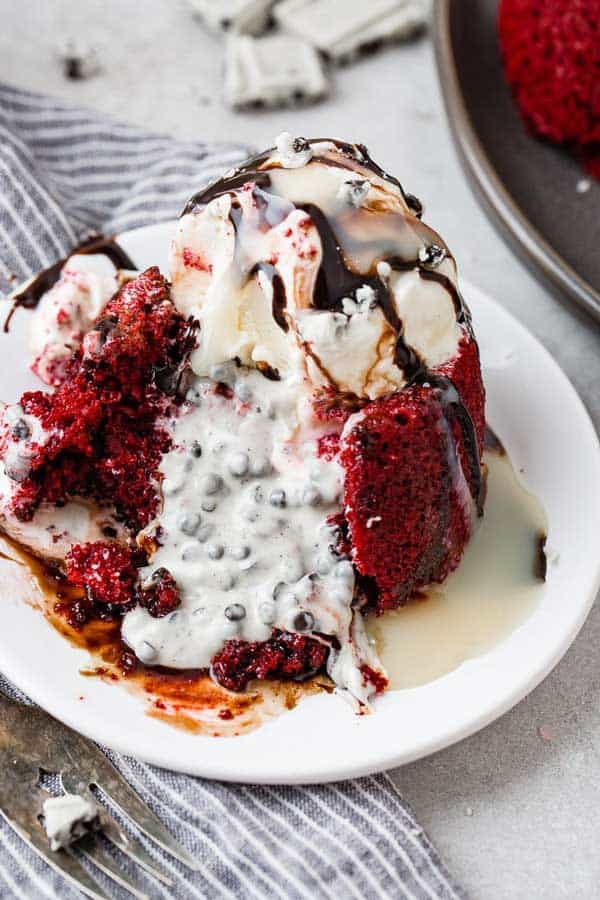
Using soft creams can make the cake taste delicious, but they are also the reason you might see a ton of slipping and sliding between the layers of the cake. Add that in with the traveling, and you have yourself a very dangerous mix, which can cause a very big mess.
Tipping
Another thing that might happen if you don’t have the cake strapped in place is the box tilting or tipping over altogether. This cake is disastrous as most likely the cake is going to break if it does fall. And there is not much you can do to salvage the cake at this point. You would have very angry clients if you made the cake for someone else.
These are a few of the worst-case scenarios that might occur when you are transporting the cake. So, I am going to tell you a few of the things you can do to keep the disaster to a minimum.
How to Transport a Cake Long Distance?
At first, I am going to go over some of the very basic things you should always follow, no matter where you’re taking the cake or how long the journey is.
Secure the Base
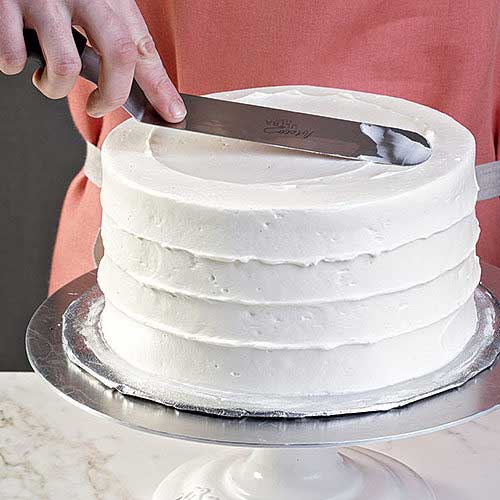
Before you start frosting the cake, you should always secure the bottom layer of the cake with the board using a bit of the frosting. This will prevent the cake from moving around the cake board, and you will have a much easier time icing the cake.
Get a Bigger Board than the Base
This might not seem like a revolutionary idea, but you should get a board that is a bit bigger than the base of your cake. It is important so that even if the cake moves, there is still some room around it to allow the movement. So about two inches on all sides is a good place to start.
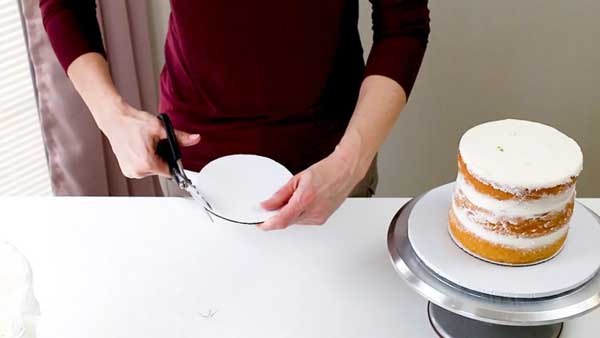
Along with the board, you need to be mindful of the size of the box. You don’t want the box to be too big to too small. The size of the box should be the same as the size of the board so that it is a snug fit, and there isn’t much movement. If the box is bigger, then you can always use tape to restrict movement.
The Decorations Should Go in a Separate Box
Often we make the mistake of decorating our cake completely before we set out, don’t make this mistake. The cake might look nice leaving your workstation, but chances are things will get messed up by the time you reach your stop. Sugar and chocolate decorations are usually very delicate and break under the slightest pressure.
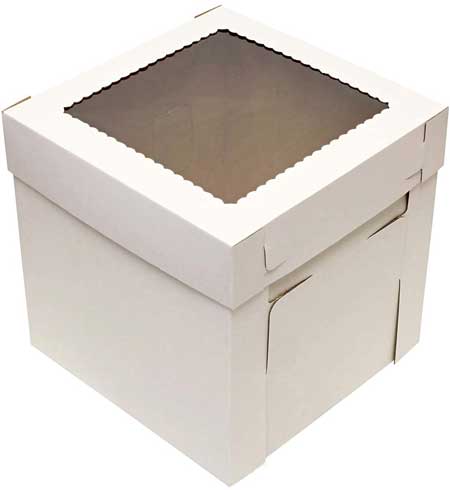
You can pack them up in a different box and set everything up in the location. This might take a little more time, but you are safe from them getting crushed.
Don’t Use Soft Icing
Here I’m mainly talking about the filling you put between the layers of the cake. If you are planning to take the cake somewhere far away, then chances are the filling will start melting. So, if you are using a soft icing, then the cake is going to fall or slide. Both of these scenarios are pretty bad.
Rather than going for regular buttercream frosting, you could opt for Swiss meringue buttercream or even Italian buttercream. Both of these do a great job of holding their shape. Just try to avoid whipped cream as it is not the greatest at holding shape.
Stack with Proper Structure
Often we make two or three-tiered cakes for weddings and birthday parties. These are the ones that are the scariest to transport as they have a higher probability of falling or tipping over. So you have to make sure they have a good structure and support.
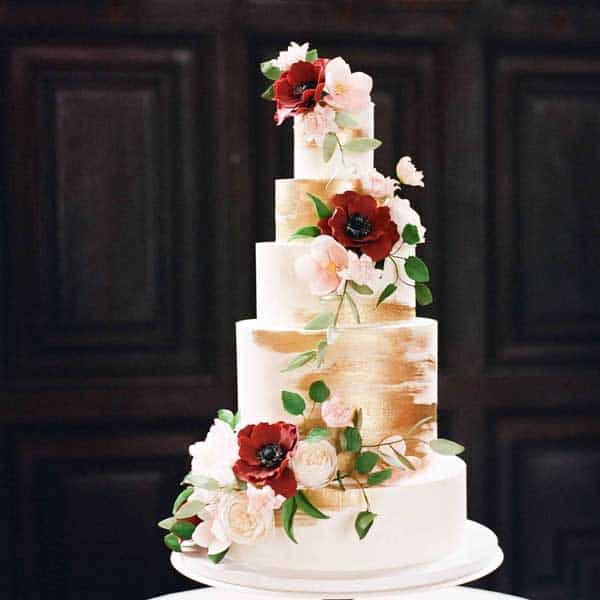
When assembling the cake, you need to give the cake’s structure some support with a good base, and the length needs the support too. For this, you might have to insert ling sticks that will hold everything to place. You don’t want the cake to sink down from the weight of the top tiers.
And you should do this part in your own workstation as the location might not have the required space to get the job done.
Make Sure the Cake Is at the Right Temperature
You will see that as cakes sit outside, they tend to get softer, and the filling starts melting too. This is what leads to the layers sliding. So, obviously, this is something you will want to avoid at all costs.

What you must do is make sure you pop the cake in the fridge for a good amount of time, and it is cool when you take it out and box it. This will give you more time to transport the cake to your location. And the cake won’t become too soft during the journey.
Also, try to make sure the AC is on in your car, so the cake doesn’t have much time to start melting. If the AC doesn’t work, then I would recommend you borrow another car as a closed and humid car will be a curse for the cake. Also, you want to avoid cold sweat on your icing. This will change the taste of the cake.
Invest in a Carrier
If you have a bakery business of your own, then a carrier is something you should invest your money on. You will reap the benefits of this for a very long time, especially if you have to transport your cakes often.
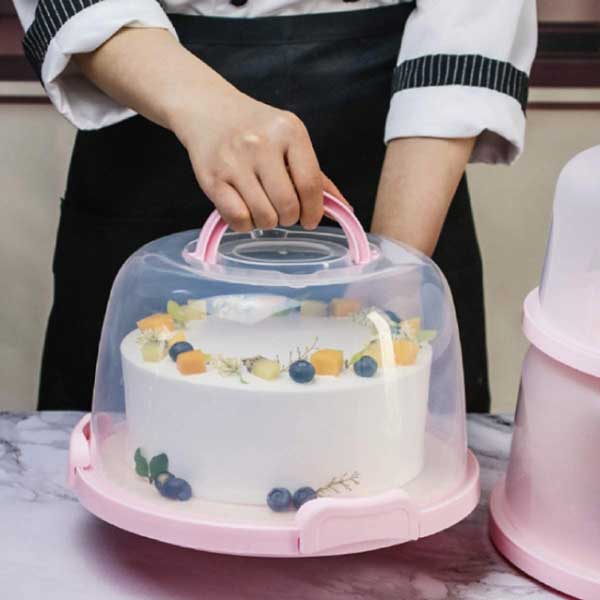
The carrier will make the transportation process much easier for you, and you will not have to worry about your cake not being placed properly or it falling if there is some kind of bump on the way. Your cake will be safe and secure throughout the.
But if delivering cake is not something you see yourself doing much often, then you might not want to spend so much money on a carrier. In that case, you can get someone to help you out with delivering the cake if it is very big.
Plan for the Worst
Even when you take all the precautions, there is still a chance that there might be something that goes wrong. And that is what you have to prepare for when you are transporting the cake. You should have some of your tools with you, which would help you salvage the cake as best as possible.
Carry some extra icing with you so you can cover up all the areas which might be affected during the journey to your stop. You can even bring someone along with you so they can assist you in fixing anything that might have gone wrong.
Final Words
If you take the tips into account when making and transporting the cake, you should not have anything to worry about. Your cake should be in good shape from the start to the end of the journey.
We hope you liked our article on how to transport a cake long distance. If you did, share it with your friends and family.

